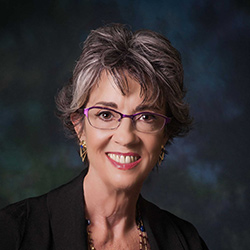Engaging residents in mentorship programs can improve their mental health and quality of life.
A few years back, while serving as chair of the Gerontological Society of America’s (GSA) Mentoring Committee, I had a pretty traditional view of mentors—and mentees.
But a new study about peer mentoring among residents in Canadian long-term care homes has expanded my view considerably.
I hope providers of aging services will pay attention to the study, which was published as a research letter in JAMDA: The Journal of Post-Acute and Long-Term Care Medicine. The findings suggest that engaging residents in mentorship programs has great potential to reduce the loneliness and depression that is prevalent in long-term care settings.
EXPANDING OUR VIEW OF MENTORSHIP
When I was promoting mentorships at GSA, I talked primarily about the value of pairing novice gerontological researchers (mentees) with seasoned researchers (mentors). In typical arrangements, mentors take time out of their busy careers to pursue an altruistic endeavor: offering professional guidance to help young researchers improve their skills and find a place in the field of aging research.
Traditional mentorship relationships are a valuable way to attract young people to our field and ensure their long-term success. But these professional relationships are not the only way mentorship happens.
The JAMDA research letter, written by Dr. Kristine A. Theurer and colleagues, suggests that another type of mentorship could have an equally significant impact on our field. The letter, of which I am a co-author, shares outcomes from the Java Peer Mentoring program, which was piloted in several long-term care communities operated by Schlegel Villages in Ontario.
The pilot had 2 significant features:
First, Java trained and empowered residents to provide friendship, information, and support to isolated residents living in their own communities.
Second, Java challenged our traditional expectations of mentoring relationships. We assume mentors give—of their time and their expertise—while mentees receive all the benefits. In the Java program, everybody—and I mean, everybody—benefits.
HOW THE PROGRAM WORKS
During the Java intervention, 2-person mentor teams consisting of a resident and a community volunteer gathered weekly in the participating long-term care homes for a team meeting and education on how to be a mentor.
After each team session, the 2-person mentor teams visited isolated residents living in the home. During those visits, team members offered emotional support, shared educational materials, and encouraged their mentees to get out of their rooms and participate in programs and activities.
The 48 resident mentors participating in the pilot had a mean age of 80, and most (88%) were women. Significantly, the group of mentors included 9 residents who researchers describe as “not cognitively competent.” Surrogate decision makers provided consent so these residents could serve as mentors in the program.
Even though this was a small study, the Java outcomes should prompt providers of aging services to ask themselves 2 important questions.
QUESTION #1: WHO BENEFITS FROM VOLUNTEER PROGRAMS LIKE JAVA?
Hint: This is a trick question.
It’s natural to assume that the mentees—those isolated nursing home residents who were visited by the mentor teams—were the main beneficiaries of the Java Peer Mentorship intervention.
That may be true, but it is only part of the answer. It turns out that peer mentors enjoyed some pretty significant benefits as a result of their participation.
For example, researchers observed significant decreases in depression and loneliness scores among peer mentors over the course of 6 months. Resident mentors reported increases in their own confidence due to the training provided. They also gave high marks to the camaraderie they experienced during weekly team gatherings.
Most important, the mentors told researchers how much they valued being able to make a difference in the lives of their peers.
“It’s changed my life,” one mentor told the researchers. “It makes me feel like I am needed.”
Think about that statement for a minute. It’s pretty powerful.
Feeling needed and having a purpose in life is what all of us are looking for, no matter who we are, where we live, how old we are, or our level of cognition.
Keep that in mind the next time you decide to implement a new program for residents. And then ask yourself:
- How can this program engage residents in meaningful, life-changing activities?
- How can this program help residents feel they have a purpose in life?
- How can this program help residents of varying cognitive abilities feel that they are making a difference?
QUESTION #2: WHO CAN HELP OUR ORGANIZATION LIVE OUT ITS MISSION?
The Java study illustrates the common and costly mistake providers of aging services make when they ignore the valuable partners who are literally right in front of them.
Before you look outside your community’s walls for help in implementing a new program, take some time to assess the interests, abilities, and compassion of residents. I bet you’ll find that many residents—like the Java peer mentors—are very interested in helping your organization live out its mission of service to others.
Take advantage of that interest. Engage residents in your work. Allow them to serve in meaningful ways. Teach them the skills they need to serve well. And build teams of residents who can work together on a mission in which they believe.
In doing so, you’ll actually be serving your resident volunteers by cultivating their strengths and, in the process, improving their mental health and quality of life.

Robyn I. Stone, DrPH, is senior vice president of research at LeadingAge, and co-director of the LeadingAge LTSS Center @UMass Boston. Her widely published work addresses long-term care policy and quality, chronic care for people with disabilities, the aging services workforce, affordable senior housing, and family caregiving.
